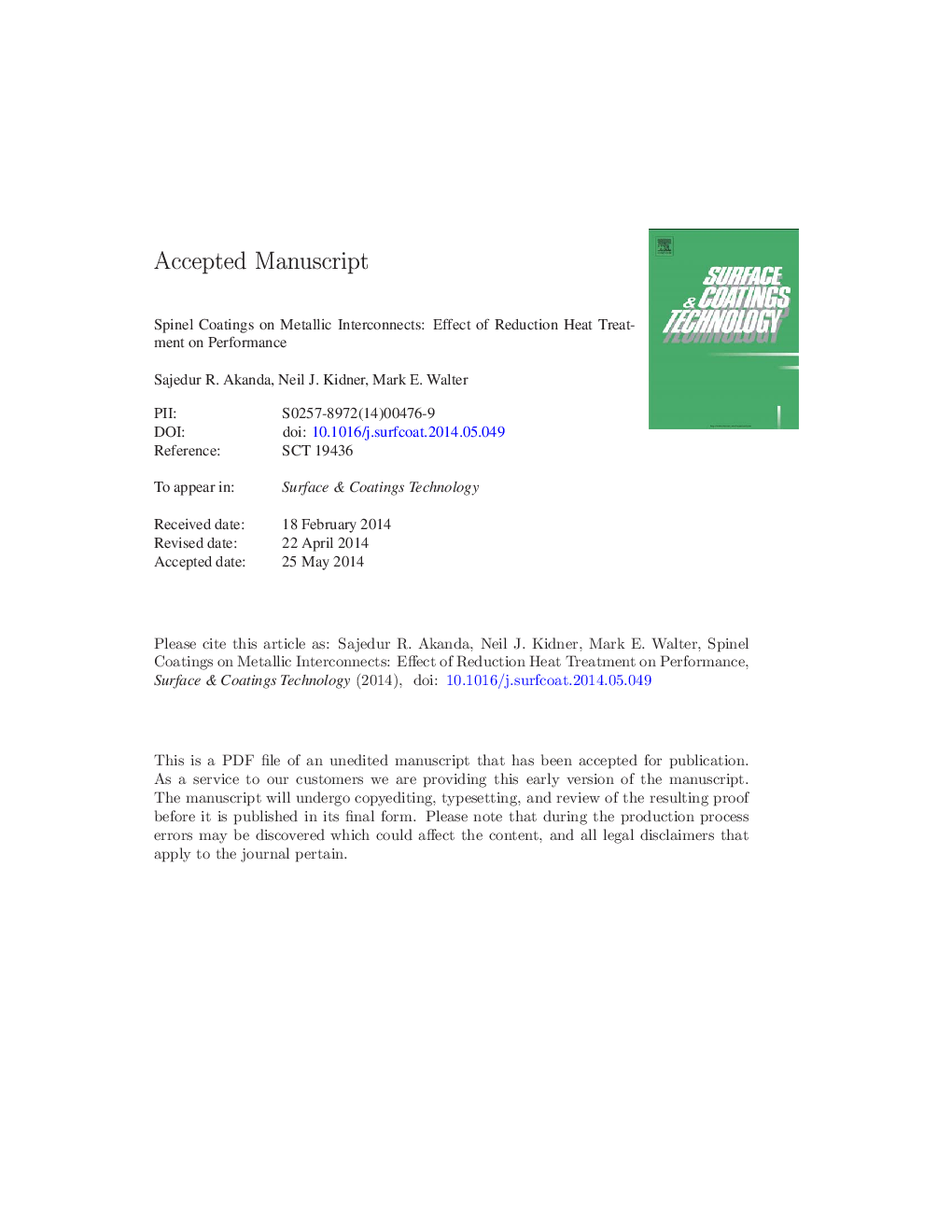| Article ID | Journal | Published Year | Pages | File Type |
|---|---|---|---|---|
| 8027848 | Surface and Coatings Technology | 2014 | 31 Pages |
Abstract
Typical manganese cobalt spinel oxide (MCO) coating processes involve both a reduction and an oxidation heat treatment to produce dense and well adherent coatings on metallic interconnects for solid oxide fuel cells (SOFCs). In a high volume production, to achieve the required cycle-time and capacity throughput, it is necessary to perform the reduction heat treatment in a continuous manner rather than batch firing. However, the continuous reduction heat treatment in furnaces requires large capital investments and also incurs high operating costs. Therefore, it is the reduction heat treatment that contributes to a significant portion of overall coating costs. For reduced cost and increased throughput, it would be preferable to eliminate the reduction heat treatment and oxidize the green coatings directly. However, it is anticipated that coatings without the reduction heat treatment would have poor adherence and density which would result in reduced functionality. In the present paper, the performances of MCO coatings processed with and without the reduction heat treatments are evaluated in terms of interfacial fracture energy from mechanical bend tests and area specific resistance (ASR) from electrical tests. Quantifying these mechanical and electrical properties allows for assessment of the benefits of the reduction firing.
Keywords
Related Topics
Physical Sciences and Engineering
Materials Science
Nanotechnology
Authors
Sajedur R. Akanda, Neil J. Kidner, Mark E. Walter,
